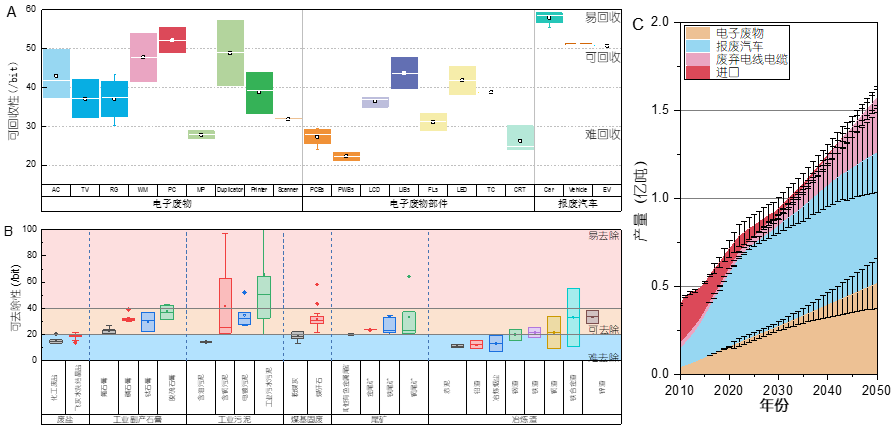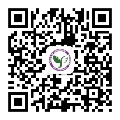Days ago, Dr. ZENG Xianlai, Associate Professor of School of Environment, and his research group (anthropogenic circularity) have made remarkable advance in uncovering the interacting properties of environment and resource in solid waste. Their new study points out that removability can be used to describe how difficult it is to detoxify solid waste. Based on the statistical entropy theory and the classification of hazardous substances, the removability of hazardous substances in typical industrial solid waste is theoretically accounted for, and the boundaries of detoxification and recycling of solid waste under the current technical conditions are quantitatively measured.

(A) Recyclability of valuable resources in solid waste (resource property); (B) Removability of hazardous substances in solid waste (environmental property); (C) Generation of typical solid wastes in China
At present, the earth has entered the Anthropocene. Human activities have caused to the depletion of geological mineral resources and the proliferation of solid waste. The total annual output of various solid wastes in China has now exceeded 10 billion metric tons, and the cumulative undisposed waste stockpile 60 billion metric tons. Solid waste recycling has gradually become a major source of resources. At the same time, solid waste has distinct characteristics of resource and environmental attributes, which allow for its recycling and detoxification. But the lack of an accurate assessment of the interaction between solid waste’s two properties is a key scientific issue affecting its recycling and management. Solving this problem is not only a major national requirement, but also belongs to the frontier of international scientific issues.
Dr. ZENG Xianlai’s research group has undertaken one fundamental research project entitled “Uncovering the Interacting Properties of Environment and Resource in Solid Waste” (2018-2022), belonging to the National Key R&D Program Critical Project on Solid Waste Recycling. From the interdisciplinary perspective of environmental, management, earth, and social sciences, the group in recent years has proposed the concept of recyclability and removability separately for recycling and detoxification of solid waste and established novel evaluation models to examine the resource and environmental properties. Their research reveals the material flow evolution characteristics of the generation, disposal, and recycling of typical solid wastes in the industrial and domestic metabolic processes, and evaluates the resource property of valuable material and the environmental property of harmful substances in solid wastes. It also reveals the generation mechanism of seven major types of bulk high-risk solid wastes and the influence mechanism of their environmental and resource properties and clarifies the temporal and spatial distribution rules and differences between the two attributes of bulk solid wastes. The team also addressed two important scientific issues, namely, the influence mechanism of physical metabolism of solid waste and the environmental and resource attributes of its interactions over its life cycle, and the identification technology for the interaction characteristics of solid waste based on entropy theory, and proposed a new method and standard for the identification the solid waste's interactive properties. Their research-based recommendations support China's ban on solid waste imports. In addition, the Group has established the Evaluation Guidelines for Resource and Environmental Attribute of Industrial Solid Waste Comprehensive Recycling, which reveals the mechanisms for the classification of mineral reserves/resources in human activities.
Their obtained results have been presented in three articles entitled “Mapping anthropogenic mineral generation in China and its implications for a circular economy”, “Estimation of waste outflows for multiple product types in China from 2010–2050”, and “Accurately quantifying the detoxification of solid waste and its scientific insights: The case of typical industrial waste”. These articles were published in the journals like Nature Communications, Scientific Data, Chinese Science Bulletin, Environmental Science & Technology, and Journal of Management Science and Engineering. Post-doctoral fellows HUANG Wenbo and XU Guochang, graduate students Qudsia Kanwal and Eva Albalghiti, and undergraduate students Io Hou Kuong, Frances, XIAO Yongzhi and DING Yixian, jointly supervised by Associate Professor ZENG Xianlai and Professor LI Jinhui of the School of Environment, participated in the above works.
Some website links of relevant papers are given here for any check:
1)https://www.sciengine.com/CSB/doi/10.1360/TB-2021-1191
2)https://www.nature.com/articles/s41467-020-15246-4
3)https://www.nature.com/articles/s41597-021-00796-z
4)https://pubs.acs.org/doi/10.1021/acs.est.8b04063
5)https://www.sciencedirect.com/science/article/pii/S2096232021000287?via%3Dihub





